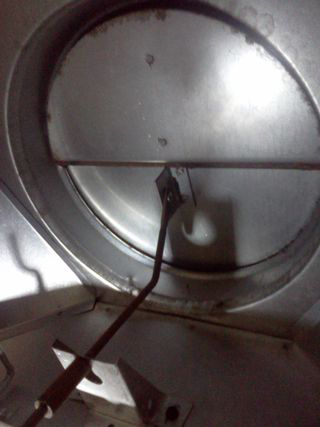
by blogediter | Jan 17, 2018 | Chimney Plugs
Q: Hi Jason, Here are a few pictures of my fireplace damper and round flue pipe. The diameter is 8″ in the flue pipe. What size Chimney Balloon do you suggest? – LG
A: Hi LG, This application is one of the most common styles of damper and flue that we run into. These pre-fabricated fireplaces are very common, but the butterfly damper that you have there is notoriously leaky. The great news is yours looks like it has never been used, so you will have no soot to deal with when you install a 9×9 Chimney Balloon. Take the deflated Chimney balloon and slide it in past the open damper. Put a couple of puffs of air into it and make sure it is installing nice and horizontal. Then inflate it the rest of the way until it tightens up, and close the valve. The 9×9 install is very easy to do. – Jason
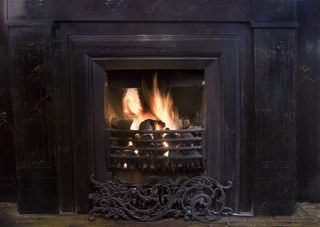
by blogediter | Jan 15, 2018 | Gas Logs
Q: I know vented gas log fireplaces are inefficient to run, but how much does an hour of use cost if you are burning propane in an average vented gas log? – DR
A: Hi Dr, Well the cost will depend upon your cost of propane and the BTU of your device but let’s make an estimate:
Say you have a 45,000 BTU unit and Propane costs $3 per gallon. The cost would be about $1.50 per hour to operate it. (Since a 90,000 BTU unit will consume 1 gallon in an hour)
Keep in mind as well that you are getting very little if any heat gains from this fuel consumption. That is the travesty of vented gas logs. – Jason

by blogediter | Jan 12, 2018 | Chimney Problems
Q: Jason, Are there any restrictions in using the Chimney Balloon in areas of the country where temps in the summer exceed 120 degrees? We live in Arizona and the outside temperature gets very high. I imagine it is even hotter by the Chimney-top on the roof. I don’t want my Chimney Balloon to burst from the heat. – KL
A: Hi KL, As long as the thermometer outside doesn’t go past 180 degrees F your Chimney Balloon will be fine, but if that happens we will have other things to worry about.
All kidding aside… The Chimney Balloon is heat reactive. If someone accidentally lights a fire under it. At about 180 degrees F, the balloon material is designed to burst and shrivels like a shrinky-dink, so it can get out of the way fast.
But keep in mind your balloon is installed low in the Chimney Balloon on by the firebox. The Chimney balloon will be nice and shaded in there, so even if you roof temps get close to 180, that won’t bother the Chimney Balloon. – Jason
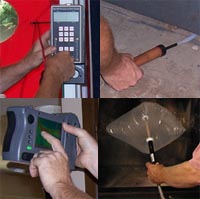
by blogediter | Jan 11, 2018 | Save Energy
Saving Home Energy
Here is a list of some free and cheap energy saving ideas that are good advice for summer or winter:
$100 or less ideas
- Roll of Aluminum tape or mastic tape to seal the seams of the heating vents in the attic or basement = $20 for a roll
- Use squares of rigid insulation foam to make a box cover for the attic pull down stairs = $35 worth of foam and glue.
- If you have a drafty window or door pull the molding off to see if there is any insulation around the window jamb gap = $7 for a can of low expansion window foam.
- Use a Chimney draft excluder like a Chimney Balloon or Flueblocker to plug the fireplace to prevent drafts through the damper = $45-$55 per fireplace
- Clean your AC coils. If you don’t want to fork out $100 or more for a professional AC tune-up, at least check your outside compressor and make sure it is clear of weeds, grass clippings and dirt free. Even a clean looking compressor can have a thin film of dirt on its fins, and that is limiting the heat transfer. Buy a can of foaming coil cleaner from the home improvement store and use your garden hose on low pressure to clean the fins. = $7 for a can of coil cleaner.
- Chase down drafts with a DIY energy audit. On a particularly windy day close your home up as tightly as you can. Then use a Smoke Pencil ($35) to check all your windows and doors and plumbing penetrations under your sinks to see if you are taking in air through the cracks. Use foam and caulk to seal them up. Then turn on your AC unit and while it is blowing, go to your attic or crawlspace (wherever your ducts are) and check the ducts with the smoke pencil to see if the joints and seams are leaky ad need more mastic applied.
- If your garage or attic tend to get super-heated, radiant barrier panels can help mitigate this. You can install these reflective panels into your ceiling joist bays in the attic or against your garage door sections to reflect out much of the radiant heat gain that is transferring into your home. They generally cost about $100 for 50 panels, which will cover most moderate sized attics.
Free
- Vacuum out HVAC return vent covers.
- Adjust the dampers on the heating vents to heat the rooms evenly.
- Do not use an open wood or gas log fireplace during cold weather. They tend to suck in more heated air from the home than they provide back.
- Clear the outside dryer vent exhaust flapper of any lint. The flapper should close back up completely when the dryer isn’t running.
- Keep long curtains from covering furnace and A/C vents (you would be surprised how often we see this)
- If you find bent/flattened fins on your AC coil, take the time to carefully use a butter knife to bring them back to straight. This also improves air flow and heat transfer.
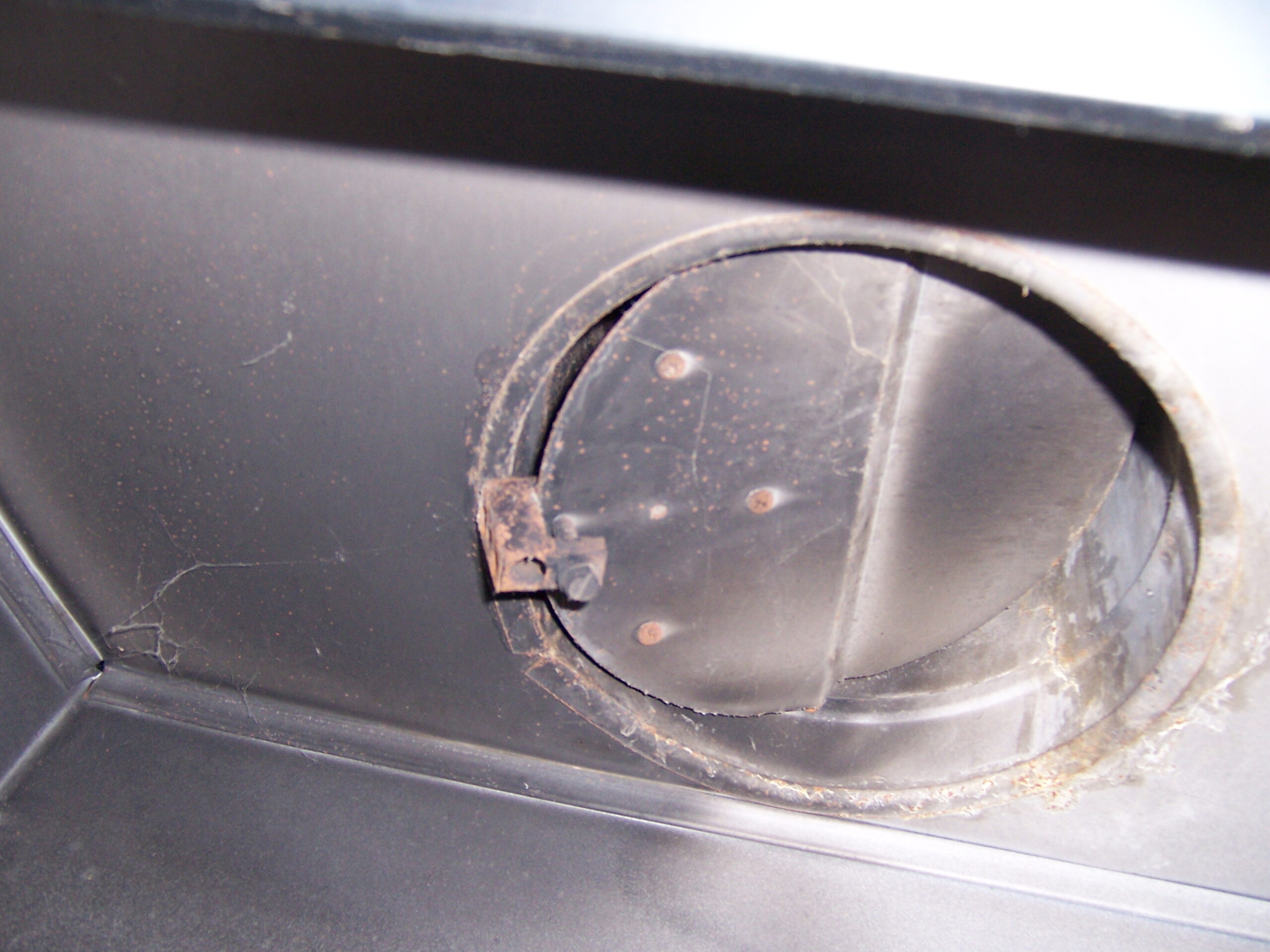
by blogediter | Jan 9, 2018 | Gas Logs
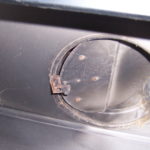 Q: I went to install my chimney balloon over my gas log fireplace and I found a clip that was holding my fireplace damper open. I removed it and now the damper works fine.
Q: I went to install my chimney balloon over my gas log fireplace and I found a clip that was holding my fireplace damper open. I removed it and now the damper works fine.
A: The clip you found was a damper restrictor. However keep in mind that it is against most state codes to have a gas log fireplace without a damper restrictor in place. I would check with your county before you go and seal up with your metal damper. This is an issue that can void some home owners insurances, so it is very important to stay within this code if it applies to your state.
The reason for this code is gas logs burn very clean and you can easily start a fire in the fireplace and forget to open the damper for quite some time while the fire burns on…This creates a buildup of carbon monoxide and heat that can start a fire (starting with your mantel) or the carbon Monoxide can overcome you and others in your home. The downside of this code is that having a damper restrictor on your damper is like having a window cracked open all year round.
If I were you I would call the County Building Code Office or call a fireplace retailer and ask them first about the codes in your area.





 Q: I went to install my
Q: I went to install my